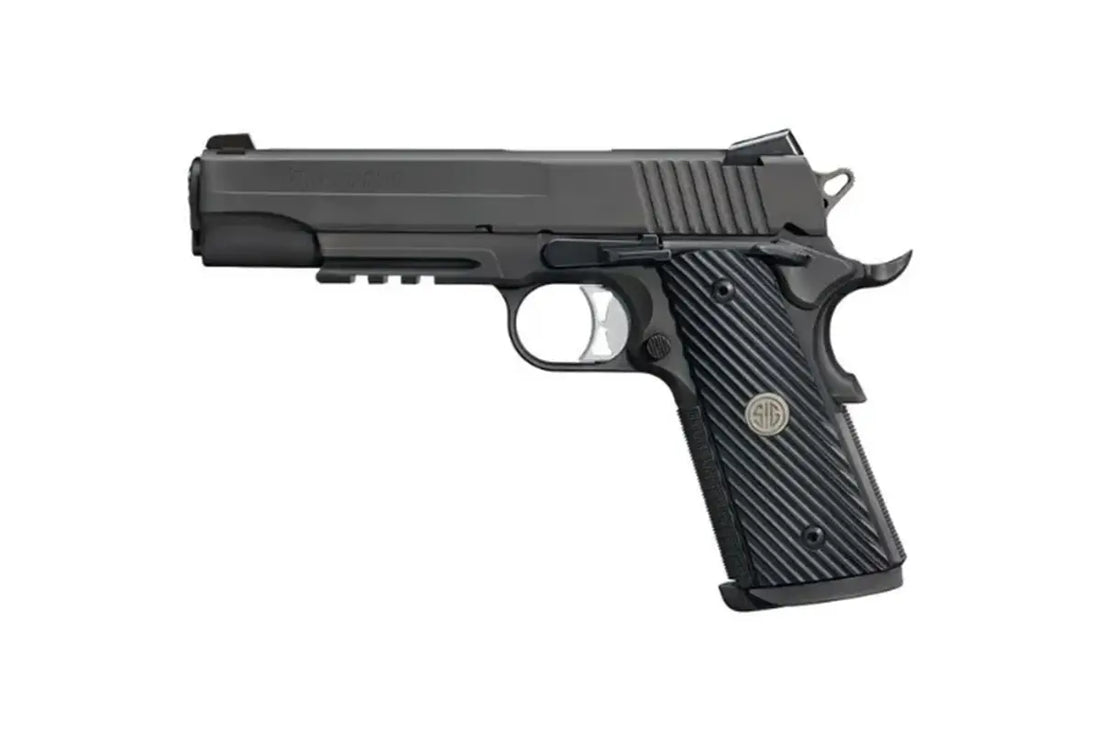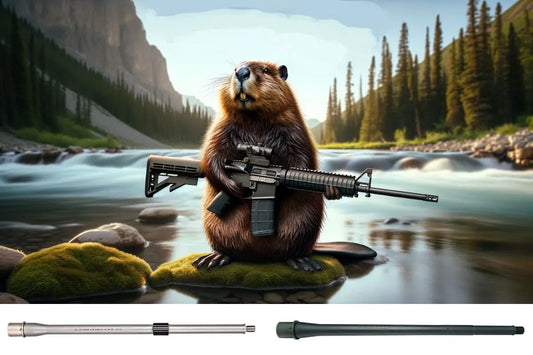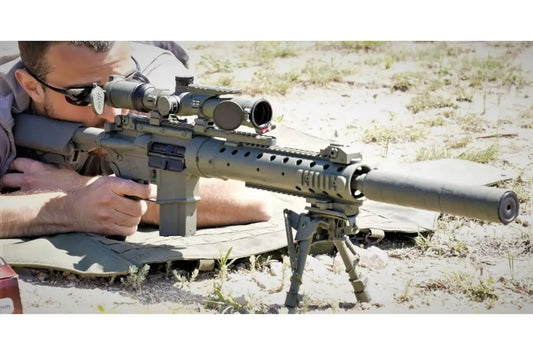
The Timeless 1911 Pistol for Self-Defense: Why It’s Still a Top Choice Today
Few firearms boast the storied legacy, iconic design, and devoted following of the 1911 pistol. Over a century after its debut, the 1911 remains a top contender in the world of self-defense handguns. But why does this venerable platform continue to capture the hearts and minds of shooters, and is it truly a good choice for personal protection in today’s world? In this comprehensive guide, we will explore the history, attributes, potential drawbacks, and recommended models of the 1911. Along the way, we will share insights from industry experts and practical tips for choosing the best 1911 for your self-defense needs.
A Brief History of the 1911 Pistol
The story of the 1911 starts with its legendary designer, John Moses Browning. By the early 20th century, Browning had already established himself as one of history’s greatest firearms inventors, but it was the Model 1911 that would cement his legacy. Officially adopted by the U.S. military in 1911, it served as the standard-issue sidearm through multiple global conflicts, including World Wars I and II, the Korean War, and well into the Vietnam War era.
A Century of Trust
The 1911’s long service history is a testament to its quality, reliability, and effectiveness. Pistols that fail military trials typically disappear from the scene, but the 1911 not only passed with flying colors; it thrived. In countless historical accounts and after-action reports, soldiers praised the 1911 for its stopping power, intuitive handling, and rugged construction.
Cultural Icon
Besides its military success, the 1911 also occupies a unique space in American firearm culture. Gun enthusiasts, collectors, and competitive shooters are drawn to its timeless design. Even more than a hundred years later, modern manufacturers continue to produce various iterations of the 1911, ensuring that it remains a mainstay in firearms stores across the country. This enduring popularity has helped the 1911 maintain a high resale value, making it an appealing option for both first-time buyers and seasoned gun owners.
Proven Reliability in High-Stress Environments
When your life is on the line, reliability is paramount. The 1911’s track record speaks for itself, having endured the muddy trenches of WWI, the jungles of Vietnam, and the day-to-day rigors of law enforcement duty. For many shooters, this proven track record is what draws them to the 1911 for self-defense.
Battle-Tested Under Extreme Conditions
One of the reasons the 1911 design has remained relevant for so long is its ability to function under adverse conditions. While modern polymers and manufacturing techniques can also yield highly reliable handguns, the 1911’s 100-plus years of real-world deployment is difficult to ignore.
Consistent Performance
A well-maintained 1911 provides consistent cycling, feeding, and ejection. This consistency is essential in a high-stress self-defense scenario. Malfunctions can occur with any mechanical device, but a 1911 built to high standards and cared for properly will serve you reliably when you need it most.
Stopping Power: The .45 ACP and Beyond
One of the 1911’s most famed attributes is its chambering in .45 ACP. This cartridge has earned a stellar reputation for its stopping power, offering excellent penetration and expansion in self-defense situations. However, modern 1911s can also be found in other calibers like 9mm, .38 Super, and 10mm, giving you options to match your personal preferences and needs.
Classic .45 ACP
Beloved for its robust energy transfer, the .45 ACP is synonymous with the 1911. Many shooters prefer the .45 ACP for its capacity to create a large wound channel. When combined with modern defensive ammunition such as Federal HST or Speer Gold Dot, you get reliable expansion and penetration that is more than adequate for personal protection.
9mm Alternatives
Not everyone wants the recoil and expense of .45 ACP. In recent years, the 9mm 1911 has become increasingly popular for self-defense and competition, thanks to its higher capacity, lower recoil, and cheaper ammunition cost. Brands like Springfield Armory, Kimber, and Dan Wesson offer high-quality 9mm 1911s that strike a balance between tradition and modern practicality.
10mm Power
For those who want even more stopping power, 10mm 1911s provide increased velocity and energy over the .45 ACP. Pistols like the Rock Island Armory TAC Ultra FS and the Kimber Custom TLE/RL II in 10mm can be compelling choices for those who desire a potent cartridge for personal defense or hunting. Keep in mind, however, that 10mm generally produces more recoil than the .45 ACP, making practice more demanding.
Ergonomics and Shootability
A firearm that fits your hand comfortably and points naturally is crucial for self-defense. The 1911 stands out for its slim profile, intuitive grip angle, and balanced weight distribution. These ergonomic features contribute to its ease of use and accuracy under stress.
Natural Point of Aim
The 1911’s grip angle is often cited as one of its most appealing features. It aligns the sights naturally when raised to eye level, allowing for faster target acquisition. For shooters with medium- to large-sized hands, the 1911 grip can feel like an extension of the arm.
Weight and Recoil Management
Most 1911 frames are made of steel or a steel alloy, giving the pistol a certain heft. This added weight helps to mitigate recoil, especially when firing powerful cartridges like .45 ACP or 10mm. The result is a smoother shooting experience that can translate to better accuracy.
Customization for Hand Size
While the traditional 1911 grip is widely praised, there are also models featuring shorter triggers, slimmer grips, or extended beavertails for enhanced comfort. Many shooters can tailor a 1911 to their exact ergonomic needs—an essential factor in building confidence and proficiency with a self-defense firearm.
Trigger Quality: Why It Matters for Self-Defense
One hallmark of the 1911 is its crisp, single-action trigger. This design typically offers a short, clean break with minimal overtravel, which can aid in better shot placement—especially under stress.
Short, Consistent Pull
A good 1911 trigger requires only a few pounds of pressure and a short travel distance before firing. This design facilitates more precise shooting, as you can better manage trigger press and follow-through. This level of control can be advantageous in a defensive scenario where shot placement is critical.
Potential Drawbacks
The 1911’s single-action system also introduces a layer of responsibility. The thumb safety must be disengaged before firing, which can be a learning curve for new shooters. However, many experts see this as a beneficial safety feature, as it requires the shooter to be deliberate in their actions.
Concealment Considerations: Is the 1911 Practical for Everyday Carry?
Despite its proven track record, some shooters worry about the size and weight of a traditional full-size 1911 when it comes to concealed carry. Fortunately, there are smaller variants such as the Commander (4.25-inch barrel) and Officer (3- to 3.5-inch barrel) models that can be more suitable for everyday carry.
Compact and Lightweight Models
Brands like Kimber and Springfield Armory offer lightweight aluminum frames, significantly reducing the overall weight. The Kimber Ultra Carry II, for example, sports a 3-inch barrel and an aluminum frame, making it more comfortable to carry for extended periods.
Holster Selection
A quality holster that suits your carry method—inside the waistband (IWB), outside the waistband (OWB), or appendix—is essential. Kydex and leather are both popular options. Companies like Galco and CrossBreed Holsters produce specialized holsters designed to accommodate 1911 pistols, ensuring a secure fit and faster draw.
Balancing Comfort and Firepower
Ultimately, whether or not a 1911 is suitable for concealed carry depends on your personal comfort and training. If you plan on carrying a 1911, consider practicing your draw and re-holstering regularly, as the manual safety and single-action nature require consistent, deliberate training.
Maintenance and Upkeep
While the 1911’s design is inherently durable, it does require regular maintenance to keep it running smoothly. Proper lubrication, cleaning, and periodic replacement of recoil springs and other small parts are key to ensuring reliability.
Importance of Regular Cleaning
Carbon buildup and gunk can accumulate in any firearm, but the 1911’s tighter tolerances make consistent cleaning especially important. A well-maintained 1911 will cycle ammunition reliably and can last for decades—perhaps even becoming a family heirloom.
Replacement Parts and Tuning
Many 1911 owners swap out parts to fine-tune their pistols. Recoil springs, firing pins, extractors, and magazines can all be upgraded with higher-quality components from reputable manufacturers like Wilson Combat or Ed Brown. These small investments can significantly improve reliability and longevity.
Routine Inspections
Make it a habit to inspect your 1911 for wear and tear. Look for signs of peening on the slide stop, cracks in the barrel bushing, and any unusual wear in the frame rails. Addressing issues early can prevent malfunctions and keep your firearm functioning at peak performance.
Price Points and Customization Options
One of the advantages of the 1911 platform is the wide range of available price points. From budget-friendly options to high-end custom builds, there’s a 1911 for almost every budget.
Entry-Level 1911s
If you’re on a tighter budget, brands like Rock Island Armory and Tisas offer entry-level 1911 models that provide a solid foundation. These pistols may not have the bells and whistles of more expensive options, but they are reliable and upgrade-friendly.
Mid-Range Models
Stepping up in price, you’ll find companies like Springfield Armory (e.g., the Range Officer series), Ruger (e.g., the SR1911), and Smith & Wesson (e.g., the SW1911). These mid-range pistols often come with enhanced sights, improved triggers, and tighter tolerances for better accuracy and reliability.
High-End and Custom Builds
At the top of the spectrum, you’ll find custom shops such as Nighthawk Custom, Wilson Combat, and Ed Brown. These pistols are hand-fitted and often feature premium finishes, match-grade barrels, and meticulously tuned triggers. While these higher-end 1911s can cost several thousand dollars, they deliver a level of craftsmanship and performance that is second to none.
Popular 1911 Models for Self-Defense
Below is a curated list of 1911s that are particularly well-suited for self-defense, taking into account factors like reliability, shootability, and ease of maintenance.
- Barrel Length: 3 inches
- Caliber: .45 ACP or 9mm
- Why It’s Great: Compact size, legendary Colt pedigree, ideal for concealed carry
- Barrel Length: 5 inches (also available in 4-inch or 4.25-inch variants)
- Caliber: .45 ACP, 9mm
- Why It’s Great: High-quality construction, match-grade barrel, decent price point for what you get
- Barrel Length: 3 inches
- Caliber: .45 ACP
- Why It’s Great: Lightweight aluminum frame, compact size, excellent trigger for a production pistol
- Barrel Length: 5 inches
- Caliber: .45 ACP
- Why It’s Great: Tactical rail, high-profile night sights, known for out-of-the-box reliability
- Barrel Length: 4.25 inches
- Caliber: .45 ACP
- Why It’s Great: American-made, durable construction, good value with modern features (like skeletonized trigger and hammer)
- Barrel Length: 5 inches
- Caliber: .45 ACP, 9mm
- Why It’s Great: Custom-level fit and finish, ultra-reliable, and a favorite among 1911 connoisseurs
Common Objections to the 1911 for Self-Defense
Despite its strengths, the 1911 isn’t without its critics. Here are some common objections and why they may or may not be a factor for you.
- Capacity
- Objection: Traditional single-stack 1911s in .45 ACP usually hold 7+1 or 8+1 rounds.
- Counterpoint: With modern magazines, some 1911s can hold up to 10 rounds of .45 ACP. Opting for a 9mm variant can increase capacity further.
- Objection: Steel-framed 1911s can be heavy, making them less comfortable for prolonged carry.
- Counterpoint: Lightweight aluminum frames and compact models address this issue.
- Objection: The 1911 has tighter tolerances, requiring more frequent cleaning and parts replacement.
- Counterpoint: Regular maintenance is a good practice for any serious self-defense firearm, and upgrading parts can enhance reliability.
- Objection: Quality 1911s can be expensive.
- Counterpoint: Entry-level models from Rock Island Armory or Tisas can be found at more budget-friendly prices.
- Objection: The need to disengage a thumb safety under stress can be a disadvantage.
- Counterpoint: Proper training and regular practice can help you master the thumb safety, turning it into a feature rather than a drawback.
Expert Quotes on the 1911’s Viability
To provide a well-rounded perspective, here are some insights from industry professionals and renowned firearms trainers:
Larry Vickers (Retired U.S. Army Special Operations and Firearms Instructor):
“The 1911 is a classic. If properly set up and maintained, it can still hold its own for serious use. The key is ensuring you invest in a quality pistol and take the time to learn its manual of arms.”
Ken Hackathorn (Co-founder of IDPA and Firearms Trainer):
“For those willing to dedicate themselves to the platform, the 1911 can be incredibly effective. But it’s not a ‘buy it and forget it’ pistol. It demands regular upkeep and training.”
Mas Ayoob (Firearms Instructor and Author):
“The 1911’s trigger and ergonomics are some of the best on the market, which is a huge advantage in high-stress shooting situations. That said, it’s essential to practice regularly with the safety and be mindful of magazine capacity.”
Rob Leatham (Champion Shooter for Springfield Armory):
“The 1911 design is over a century old, but it’s still incredibly relevant. The ergonomics, trigger, and potential accuracy are outstanding, which is why competitors and defensive shooters alike continue to rely on it.”
These quotes highlight the notion that the 1911 remains an outstanding option for self-defense—provided you dedicate yourself to understanding and maintaining it.
Final Thoughts
So, is a 1911 a good self-defense gun? The answer largely depends on your level of commitment and personal preferences. The 1911 offers:
- Proven History and Reliability: Over 100 years of military and law enforcement service.
- Excellent Shootability: Ergonomics, weight distribution, and a crisp single-action trigger.
- Customization and Variety: Countless calibers, sizes, finishes, and price points to fit every need.
- Resale Value: Often retains value better than many other firearm platforms.
However, potential drawbacks include:
- Maintenance Requirements: Demands regular cleaning and parts checks due to tight tolerances.
- Lower Capacity: Single-stack design typically holds fewer rounds than many polymer-framed, striker-fired pistols.
- Manual Safety: Requires consistent training to disengage reliably under stress.
If you’re willing to invest time and effort into training and upkeep, the 1911 can be an outstanding self-defense handgun. From compact carry pistols to full-size tactical models, the 1911’s timeless design and proven performance continue to make it a favorite among discerning shooters.
Where to Buy
Ready to explore the world of 1911 pistols? Check out Guns.com to compare prices and find the perfect 1911 model for your needs.




